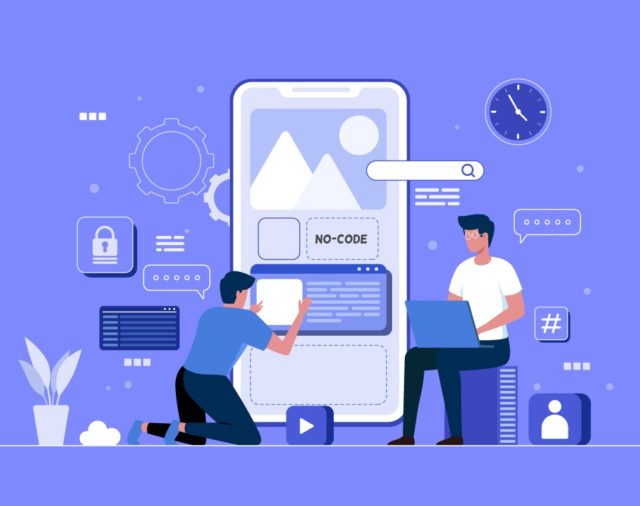Last Thursday, we hosted an event on illume hire with Lacey Kesler, Founder of Women in No Code and the Head of Education for Adalo. Not many people know the term “no code” because it’s only been around for the last three years. It’s becoming more popular though because people are able to build out their product idea and earn income using these tech tools. No code opens up the ability to create an app or online product for anyone who is not a developer. And during the pandemic, even more no code tools have launched for those of us who don’t plan on ever being a developer.
Lacey said she fell in love with software a few years ago and started out thinking she’d be a developer. She quickly learned however, that coding was not for her and that’s when she discovered no code tools. When she was on a group call and advised them on what tools they should use to create their product, she noticed that the women would send her a direct message instead of asking a question in public. That’s when she came up with the organization, “Women in No Code”.
Lacey walked through different ideas that are possible to create but she emphasized that there WILL be a learning curve. She said it will give people a leg up when looking for a job or when thinking about building a product and creating the first version (called a minimal viable product). Check out tutorials on YouTube if you get stuck on working with any of the no code products you run across.
"As creating things on the internet becomes more accessible, more people will become makers. It's no longer limited to the <1% of engineers that can code resulting in an explosion of ideas from all kinds of people."
- Ryan Hoover, Founder of Product Hunt
Top No Code Resources to get started:
- Adalo is a great resource for building an app and includes tutorials as well as templates to try out different scenarios. Adalo - Build Your Own No Code App
- Here are some of Adalo’s predictions about the prevalence of no code by 2026. The Future is No-Code Book & Mini-Series | Conclusions
- Twitter No Code Experts: Lacey discussed different people to follow on Twitter such as @colleeMBrady - her site, iheartnocode.com has plenty of resources too. The Program Director for Be On Deck (a startup accelerator) on Twitter @thisiskp is another person to follow. She recommended following @nocodelife on Twitter as well.
- Ben Tossell @bentossell on Twitter who started https://www.makerpad.co/ (and was acquired by Zapier 18 months after launch) is another site to check out. They have tutorials and a no code course to help tackle your project.
If you’re having trouble landing a job or figuring out what kind of problem to solve, start playing around with some of your favorite apps and then set aside time to think about what is really needed right now. Begin by making something simple like the guy who works for Zapier (an automation and connection tool).
Listen to podcasts like the one Lacey hosts called The Visual Developers podcast. It will give you an outline of how the movement got started and more importantly where it’s headed as it pertains to the future of work. Most of these podcasts have been around for only a year so now is the time to dive in and get familiar with these tools.
Here is the replay of the event. Hope you enjoy it.
Future of Work: Get Set Up To Build Your No-Code Product
Emily
| MORE ARTICLES
Emily’s vision for illume hire developed as part of her journey from a startup-curious sales and media professional to co-founder and CEO. Her passion is to provide resources to support professionals with 20+ years experience. Emily was part of the founding leadership team of Age Equity Alliance, a non-profit focused on the benefits of an intergenerational team.








